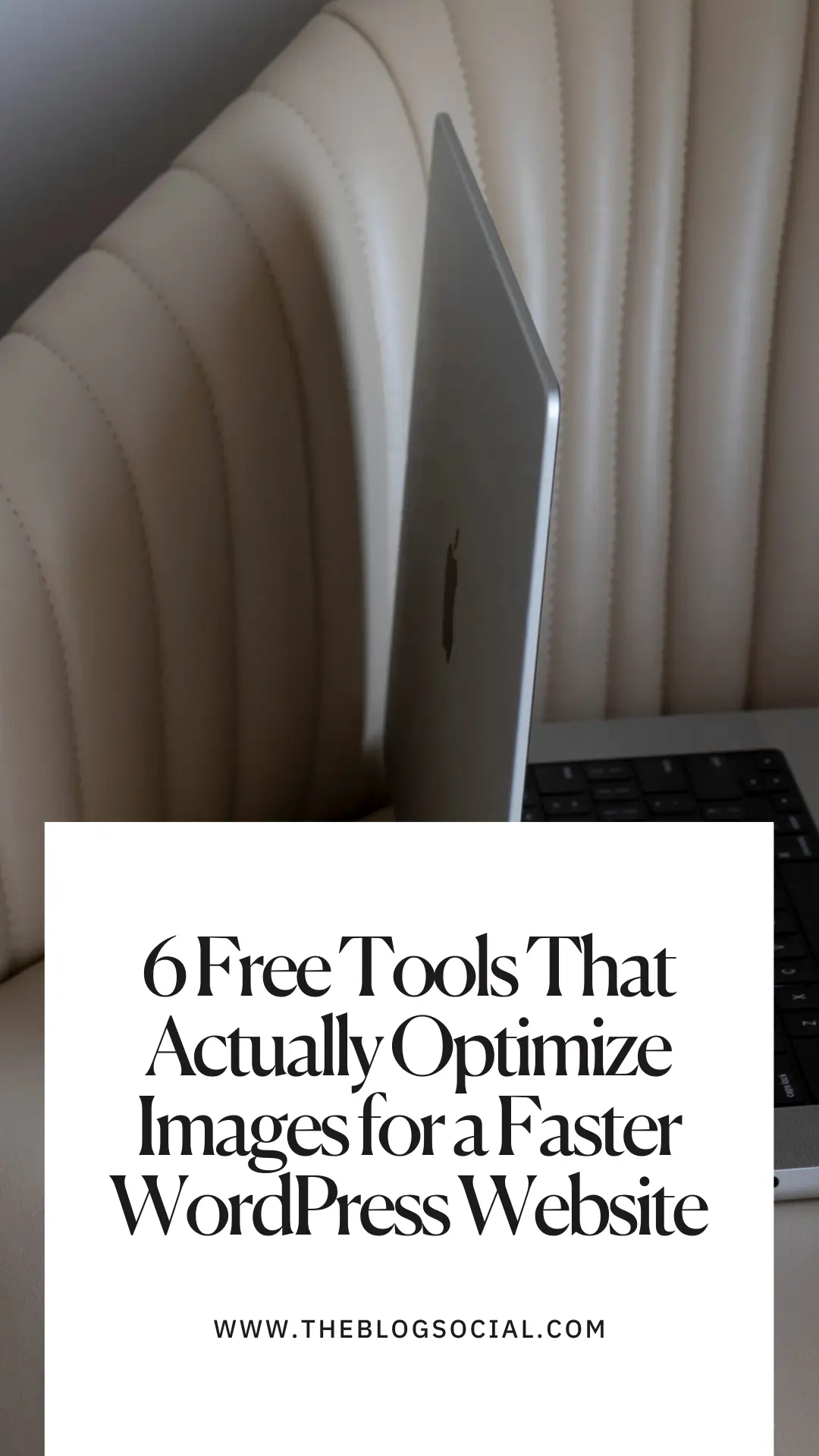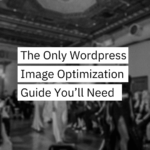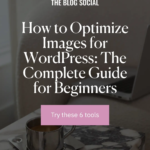Say goodbye to slow loading times and hello to lightning-fast websites!
We’ve all been there—clicking a link and watching that loading circle spin… and spin… and spin until we finally hit the back button. And guess what? Your visitors feel the same way when your site takes forever to load.
Here’s the truth: those gorgeous, high-quality images on your website might be the very thing slowing you down. But don’t worry—I’m not asking you to choose between stunning visuals and speed. You can have both!
Today, I’m breaking down the best image optimizers to speed up your website while keeping your visuals sharp. These tools have saved my website (and my sanity) more times than I can count.

Table of Contents
- Why Image Optimization Matters (Like, Really Matters)
- The Best Free Tools to Optimize Your Images
- Must-Have WordPress Plugins for Image Optimization
- Advanced Tips for Super-Fast Loading Times
- Common Image Optimization Mistakes to Avoid
- Your Next Steps for a Lightning-Fast Website
- Final Thoughts
- WANT TO TAKE YOUR WEBSITE VISUALS TO THE NEXT LEVEL?
Why Image Optimization Matters (Like, Really Matters)
Let’s get real for a second. Did you know that images make up about 50% of an average webpage’s size? That’s huge!
When visitors hit your site and it takes more than 3 seconds to load, about 40% of them will bounce. Yep, they’ll leave before seeing your amazing content or products.
Plus, Google loves fast websites. If yours loads quickly, you’ll rank higher in search results. Win-win!
The Best Free Tools to Optimize Your Images
You don’t need to spend a fortune to get great results. These free image optimizers will get you started on the right track:
1. TinyPNG
This little panda has saved me countless times! TinyPNG uses smart compression techniques to reduce your PNG and JPEG file sizes without losing quality. If you’re on the hunt for an easy way to optimize images. I highly recommend it.
What makes it awesome:
- Super easy to use—just drag and drop
- Compresses images by up to 80%
- Free for up to 20 images per month
- Has a WordPress plugin version
I use TinyPNG for almost all my blog images, and the difference in load time is amazing.
2. Squoosh
Created by Google, Squoosh gives you amazing control over image compression. You can literally see a before/after comparison as you adjust settings.
What makes it awesome:
- Works completely in your browser
- Let’s you compare quality in real-time
- Converts between image formats
- No account needed
This is my go-to when I need to manually optimize important images for landing pages.
3. ShortPixel
ShortPixel is a gem for WordPress users! It automatically optimizes images as you upload them.
What makes it awesome:
- Free for up to 100 images per month
- Works with existing images in your media library
- Keeps a backup of your original images
- Optimizes without visible quality loss
I’ve used ShortPixel on websites with great results—it’s perfect if you’re not super tech-savvy.
Must-Have WordPress Plugins for Image Optimization
If your website runs on WordPress (like many of us), these plugins will make image optimization a breeze:
1. Smush
Smush is one of the most popular WordPress image optimization plugins for good reason. It works in the background, optimizing your images automatically.
What makes it awesome:
- Bulk optimization for existing images
- Lazy loading feature (images load as visitors scroll)
- Incorrect image size detection
- The free version works great for most bloggers
I’ve used Smush on my own WordPress website for years! If you want a reliable way to optimize images on your website, this tool is super effective.
2. EWWW Image Optimizer
This oddly-named plugin is seriously powerful. It optimizes your images locally on your server, which means you keep full control of your files.
What makes it awesome:
- No file size limits
- Converts images to better formats automatically
- Doesn’t require external services
- Very flexible settings
EWWW is perfect if you’re a bit more tech-savvy and want complete control over your optimization.
3. Imagify
Created by the team behind WP Rocket (a popular caching plugin), Imagify is both powerful and user-friendly.
What makes it awesome:
- Three levels of compression to choose from
- Bulk optimization with one click
- Auto-optimization when uploading
- WebP format conversion
I recommend Imagify to clients who want something powerful but easy to use.
Advanced Tips for Super-Fast Loading Times
Want to take your website speed to the next level? Try these advanced techniques:
1. Use WebP Images
WebP is a modern image format that provides better compression than PNG or JPEG. Many of the tools I mentioned above can convert your images to WebP.
Most modern browsers support WebP now, which means smaller file sizes without quality loss. Your website development will thank you for making this switch!
2. Implement Lazy Loading
Why load all images at once when visitors might not scroll down your page? Lazy loading means images load only when they’re about to come into view.
Many WordPress plugins offer this feature, or you can add it with a bit of JavaScript if you’re comfortable with coding.
3. Set Proper Image Dimensions
Always specify the width and height of your images in your HTML or CSS. This helps browsers allocate space correctly and prevents layout shifts as the page loads.
This simple website design tip can dramatically improve your user experience!
4. Use a CDN (Content Delivery Network)
A CDN stores copies of your images on servers around the world, delivering them from the location closest to each visitor. This speeds up load times, especially for international traffic.
Cloudflare offers a free CDN that’s fairly easy to set up, even for beginners.
Common Image Optimization Mistakes to Avoid
I’ve made these mistakes so you don’t have to!
- Using images that are way bigger than needed – If your display area is 800px wide, don’t upload a 3000px image!
- Skipping the alt text – This isn’t just for SEO—it helps visually impaired visitors and improves your landing page design.
- Forgetting to optimize background images – Those big hero images need optimization too!
- Not testing after optimization – Always check that your images still look good after compression.
Your Next Steps for a Lightning-Fast Website
Ready to speed up your website and optimize images for your website? Here’s what to do right now:
- Install one of the WordPress plugins I mentioned (I recommend starting with Smush if you’re new to this)
- Run a speed test on your site using GTmetrix or Google PageSpeed Insights to get a baseline
- Optimize your largest images first—they’ll give you the biggest speed boost
- Set up a process for optimizing new images before uploading them
Remember, a faster website means happier visitors, better SEO rankings, and potentially more conversions. It’s worth taking the time to get this right!
Final Thoughts
Image optimization might not be the sexiest part of running a website, but it’s definitely one of the most important. With the tools I’ve shared today, you can dramatically improve your site speed without sacrificing visual quality.
Your visitors (and your analytics) will thank you!
Which image optimizer will you try first? Drop a comment below and let me know how it goes!
WANT TO TAKE YOUR WEBSITE VISUALS TO THE NEXT LEVEL?
Level up your brand with stunning stock photos from Haute Stock! As a member, you’ll get access to thousands of gorgeous, high-quality images that are already optimized for the web.













0 Comments